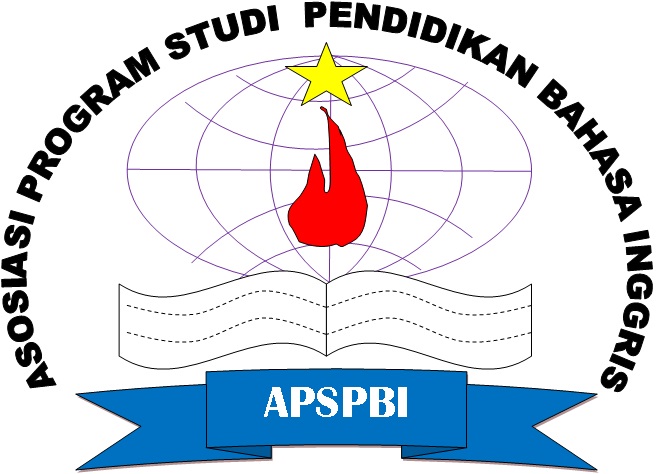Students’ higher-order thinking skills: constructing best practices in teaching English during online learning
DOI:
https://doi.org/10.28918/erudita.v2i1.5350Keywords:
Higher-order thinking skills, Online learning, Teaching EnglishAbstract
Conducting higher-order thinking skills (HOTS) activities in an English language classroom is a complete task for teachers, especially in the outbreak. Teachers need a careful plan and effective teaching strategies to make the students engage with the HOTS activities to increase their English language skills. The present study aims to investigate best practices of higher-order thinking skills in teaching English during online learning. A qualitative approach with a case study design was employed in this study. Two teachers of senior high schools in Pekalongan, Central Java, Indonesia volunteered to participate. Data were collected through classroom observation, semi-structured interviews, and document analysis. The classroom observation and document analysis were analyzed using thematic analysis. Findings of the study reveal that both teachers constructed best practices of higher-order thinking skills in their teaching and learning process. They eliminated one of the criteria of HOTS and skipped it in some learning processes. The teachers in their classroom activities should incorporate all criteria of HOTS, i.e., analyzing (C4), evaluating (C5), and creating (C6), properly. The lesson plans did not become the guidance in fostering HOTS to their students. This study also portrays the challenges faced by the teachers in constructing HOTS-based activities during online learning.
References
Afflerbach, P. Cho, B., & Kim, J. (2015). Conceptualizing and assessing higher-order thinking in reading. Theory Into Practice, 54(3), 203-212. https://doi.org/10.1080/00405841.2015.1044367
Krathwohl. (2002). A revision of Bloom's taxonomy: An overview. Theory Into Practice, 41(4), 212-218. https://doi.org/10.1207/s15430421tip4104_2
Barahal, L. S. (2008). Thinking about thinking: Preservice teachers strengthen their thinking artfully. Phi Delta Kappan, 90(4), 298–302.
Barak, M., & Dori, Y. J. (2009). Enhancing higher order thinking skills among in-service science teachers via embedded assessment. Journal of Science Teacher Education, 20(5), 459-474. https://doi.org/10.1007/s10972-009-9141-z
Berg, G. (2004). The use of assessment in the development of higher-order thinking skills. Africa Education Review, 1(2), 279-294. https://doi.org/10.1080/18146620408566285
Bloom, B. (1956). Taxonomy of educational objectives: Cognitive domain. McKay.
Bradshaw, A. C., Bishop, J. L., Gens, L. S., Miller, S. L., & Rogers, M. A. (2002). The relationship of the world wide web to thinking skills. Educational Media International, 39(3–4), 275–284. https://doi.org/10.1080/09523980210166071
Brookhart, S. M. (2010). Assess higher-order thinking skills in your classroom. ASCD.
Creswell, J. W. (2003). Research design: Qualitative, quantitative, and mixed method approaches. Sage Publication Inc.
Faravani, A., & Atai, M. (2015). Portfolio assessment and the enhancement of higher order thinking through multiple intelligence and dialogic feedback. Issues in Language Teaching, 4(1), 1–25. https://doi.org/10.22054/ILT.2015.3188
Ganapathy, M., Singh, M. K. M., Kaur, S., & Kit, L. W. (2017). Promoting higher order thinking skills via teaching practices. 3L: Language, Linguistics, Literature (The Southeast Asian Journal of English Language Studies), 23(1), 75–85. http://doi.org/10.17576/3L-2017-2301-06
Ginting, A. A., & Kuswandono, P. (2020). Challenges faced by English teachers: Implementation of higher order thinking skills (HOTS) in designing assignments in East Indonesia. Pedagogy: Journal of English Language Teaching, 8(1), 13-23. https://doi.org/10.32332/pedagogy.v8i1.1688
Heron, M., & Palfreyman, D. M. (2021). Exploring higher-order thinking in higher education seminar talk. College Teaching, 1-21. https://doi.org/10.1080/87567555.2021.2018397
Ibarra-Saiz, M. S., Rodriguez-Gomez, G., & Boud, D. (2021). The quality of assessment tasks as a determinant of learning. Assessment & Evaluation in Higher Education, 46(6), 943-955. https://doi.org/10.1080/02602938.2020.1828268
Madhuri, G. V., KantamreddI, V. S. N., & Goteti, L. N. S. P. (2012). Promoting higher order thinking skills using inquiry-based learning. European Journal of Engineering Education, 37(2), 117-123. https://doi.org/10.1080/03043797.2012.661701
McLoughlin, D., & Mynard, J. (2009). An analysis of higher order thinking in online discussions. Innovations in Education and Teaching International, 46(2), 147-160. https://doi.org/10.1080/14703290902843778
Ministry of Education and Culture. (2020, May 29). Kemendikbud terbitkan pedoman penyelenggaraan belajar dari rumah [Minstry of Education and Culture ratified the guideline for learning from home]. https://www.kemdikbud.go.id/main/blog/2020/05/kemendikbud-terbitkan-pedoman-penyelenggaraan-belajar-dari-rumah
Ministry of Education and Culture. (2017). Panduan implementasi keterampilan abad 21 kurikulum 2013 di SMA [Guidelines for the implementation of 2013 curriculum based on 21st century skills]. https://awan965.files.wordpress.com/2017/09/panduan-implementasi-kecakapan-abad-21.pdf
Margana, & Widyantoro, A. (2017). Developing English textbooks oriented to higher order thinking skills for students of vocational high schools in Yogyakarta. Journal of Language Teaching and Research, 8(1), 26–38. https://doi.org/10.17507/jltr.0801.04
Narayanan, S., & Adithan, M. (2015). Analysis of question papers in Engineering courses with respect to hots (higher order thinking skills). American Journal of Engineering Education (AJEE), 6(1), 1–10. https://doi.org/10.19030/ajee.v6i1.9247
Sesmiyanti, S., & Melani, M. (2021). The implementation of HOTS in teaching English process at tenth grade of MTI Pasia. Acitya: Journal of Teaching and Education, 3(1), 117-130. https://doi.org/10.30650/ajte.v3i1.2155
Sugiyono. (2013). Metode penelitian kuantitatif, kualitatif dan R&D [Qualitative, quantitative, and R&D research methods]. Alfabeta.
Sund, P., & Gericke, N. (2020). Teaching contributions from secondary school subject areas to education for sustainable development – a comparative study of science, social science and language teachers. Environmental Education Research, 26(6), 772-794. https://doi.org/10.1080/13504622.2020.1754341
Veloo, A., Ramli, R., & Khalid, R. (2016). Assessment practices among English teachers in Malaysian secondary schools. International Journal for Infonomics, 9(4), 1220–1227. https://doi.org/10.20533/iji.1742.4712.2016.0149
Downloads
Published
How to Cite
Issue
Section
License
Copyright (c) 2022 Niken Emiria Faradella

This work is licensed under a Creative Commons Attribution-ShareAlike 4.0 International License.















